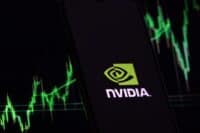

It is no secret that investors love dividends. That said, it has not been that long that the large established technology leaders have been big on paying dividends. Today’s environment is a different matter, and after tax reform these technology giants now have full access to their capital regardless of where they have it domiciled.
Microsoft Corp. (NASDAQ: MSFT) was hardly given much attention for announcing a dividend hike on Tuesday evening. This hike is much more relevant than just as it pertains to Microsoft. It will keep the pressure on other technology giants to raise their dividends as well.
Still, should this dividend hike be considered a disappointment? The company’s meteoric stock gains over the past two years may play a partial role here in why investors haven’t been applauding even more than they should have been.
Microsoft’s board of directors declared a quarterly dividend of $0.46 per share, and the $0.04 per share gain represents a dividend hike of 9.5%. To put this in perspective, Microsoft’s yield as of the $113.21 closing price on Tuesday was 1.5%. The new dividend yield after a 1% price drop to $112.05 is now looking to be 1.6% or so, with a $1.84 per share annualized dividend payment.
As far as why this matters, Microsoft’s shares would have a far higher yield had its stock price not risen so much in 2018 and 2017. On a dividend-adjusted basis, Microsoft shares were up 88% since the first trading day of 2017, and the stock was last seen trading up 33% so far in 2018. Another consideration about the dividend and the share price gains is that Microsoft is currently worth more than $850 billion, putting the tech giant within striking range of having a $1 trillion market cap.
It also is no secret that investors hate seeing a dividend get cut, and no board of directors ever wants to vote to lower its dividend. That should, at least on the surface, imply that Microsoft has basic comfort levels with its consensus analyst earnings estimates in the quarters and years ahead. If it was worried that the earnings growth wouldn’t be there, then it would either not raise the dividend or would have raised it by less than the 9.5% that was announced.
Another issue to consider is that this likely will keep the dividend pressure going for technology rivals. 24/7 Wall St. has included some of the top technology dividend payers as a comparison, and all these companies have raised their dividends over time.
Apple Inc. (NASDAQ: AAPL) has a dividend yield of 1.35%, despite having reached a $1 trillion value and despite having far more cash on its books. Apple’s last dividend hike was by almost 16%, but it has the largest cash surplus in the world.
Applied Materials Inc. (NASDAQ: AMAT) has a 2.04% dividend, but that yield has risen because its shares have dropped handily. The last hike doubled of its dividend, but that was to become competitive in the eyes of dividend investors. Its market cap is also a fraction of other tech giants.
Cisco Systems Inc. (NASDAQ: CSCO) has become the king of dividends in technology with its almost 2.8% yield. Still, its market cap is way behind at $221 billion. Cisco’s last dividend hike was almost 14%.
Intel Corp. (NASDAQ: INTC) has a hefty dividend yield of 2.60%, and its market cap is just $212 billion. Intel’s last dividend hike was by 10%.
Before overly worrying about why Microsoft shares were down on Wednesday, it’s important to understand that some analysts and investors may have wanted more. That may sound like greed, but it’s par for the course in the investing community. Merrill Lynch recently kept a Buy rating on Microsoft, but it had forecast an expected 15% to 20% hike.
Reuters has noted that Morgan Stanley sees this as being below Microsoft’s trailing 12-month operating income growth of about 20% and that it may be less than investors were expecting. That said, Morgan Stanley previously noted a high probability of an above-average dividend hike.
Before assigning too much value on Morgan Stanley’s view, consider what an annualized payout of $1.84 per share means when you get into the numbers. Thomson Reuters has earnings estimates of $4.28 per share for fiscal year 2019 and $4.91 for fiscal 2020. Companies have to leave at least some buffer against earnings, and analysts and investors frequently punish companies if they pay out too much of their normalized earnings per share in dividends. After all, that can negatively impact an ability to spend on R&D and stock buybacks and to make acquisitions.
This dividend hike will be finalized at the Microsoft annual shareholder meeting set for November 28, 2018, but you can expect no objections. The dividend is payable on December 13 to shareholders of record on November 15, and the ex-dividend date, where the stock price will be reflected, will be November 14. Shareholders at the close of business on September 26, 2018, will be entitled to vote at the annual shareholders meeting.
Microsoft shares were last seen trading down 1.4% at $111.65 on Wednesday morning. Maybe some investors wanted a larger dividend hike, but having a nearly 10% dividend hike is still quite impressive. Microsoft has a 52-week trading range of $72.92 to $113.73 and a consensus analyst target price of $123.24.
Sometimes dividend hikes are well received and sometimes they are used as an excuse to take some profits. The latter seems to be the case for the time being.
Sponsored: Find a Qualified Financial Advisor
Finding a qualified financial advisor doesn’t have to be hard. SmartAsset’s free tool matches you with up to 3 fiduciary financial advisors in your area in 5 minutes. Each advisor has been vetted by SmartAsset and is held to a fiduciary standard to act in your best interests. If you’re ready to be matched with local advisors that can help you achieve your financial goals, get started now.
Thank you for reading! Have some feedback for us?
Contact the 24/7 Wall St. editorial team.



